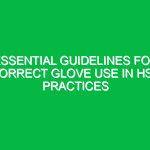Welcome to Today’s Toolbox Talk
Good morning, everyone! Today, we are going to discuss an important topic that may not seem directly related to our daily tasks but plays a significant role in our overall Safety culture: Playing the Lottery and its implications for Workplace Injuries. As we dive into this discussion, I encourage you to keep an open mind and think about how our everyday decisions can impact our Safety on the job. Let’s get started!
The Concept of Playing the Lottery
When we talk about Playing the Lottery, we’re not just referring to tickets and jackpots. In a broader sense, it represents the risks we take in our lives, including our work Environment. Just like in a lottery, we often weigh the odds—how likely is something to happen, and what are the consequences if it does? In the workplace, this translates to assessing risks associated with our tasks, the environment, and our behaviors.
Understanding Workplace Injuries
Workplace Injuries can happen in the blink of an eye—much like winning or losing a lottery ticket. They can result from various factors, including unsafe practices, lack of proper Training, equipment failure, or even distractions. By understanding the relationship between our decisions and their outcomes, we can take proactive steps to minimize risks and promote a safer workplace.
Why This Matters
Every day, we make choices about how we approach our work. Some of these choices might seem trivial, but they can have significant consequences. Just like gambling, when we take shortcuts or ignore safety protocols, we increase our chances of a negative outcome. Today, we’ll explore how recognizing the risks associated with Playing the Lottery can help us avoid Workplace Injuries and foster a culture of safety.
Key Aspects of Playing the Lottery in Workplace Safety
Risk Assessment
In the context of Playing the Lottery, risk assessment is crucial. It involves identifying Hazards, evaluating the risks associated with them, and determining appropriate controls. Here’s how you can conduct a basic risk assessment:
- Identify Potential Hazards: Look around your workspace. Are there any tools, equipment, or materials that could cause harm?
- Evaluate Risks: Consider how likely it is that a hazard could cause an injury. Ask yourself, “What could go wrong?”
- Implement Controls: Based on your evaluation, decide what measures can be put in place to reduce risks. This could include safety training, using protective equipment, or changing work processes.
Real-Life Example: The Consequences of Risk Ignorance
Let’s take a moment to consider a hypothetical scenario. Imagine a worker who decides to skip wearing Safety Goggles while operating machinery. They think, “I’ve done this a hundred times; nothing will happen.” One day, a small piece of debris flies into their eye, leading to a serious injury. This incident could have been prevented by simply adhering to safety Regulations, showing that ignoring risks is akin to Playing the Lottery with your well-being.
Potential Hazards Related to Playing the Lottery and Workplace Injuries
Like any gamble, Playing the Lottery involves weighing potential hazards against the odds of a positive outcome. Here are some common hazards that can lead to Workplace Injuries:
- Equipment Malfunction: Machines that are not properly maintained can fail, causing accidents.
- Human Error: Distractions or fatigue can lead to mistakes that result in injuries.
- Environmental Factors: Weather conditions or workplace layout can create slippery or Hazardous Areas.
Best Practices to Mitigate Risks
To minimize the risks associated with Playing the Lottery in a workplace context, consider the following Best Practices:
- Follow Safety Protocols: Always adhere to the Safety Guidelines set forth by your employer.
- Stay Alert: Keep your focus on the task at hand. If you feel fatigued, take a break.
- Communicate: If you notice a potential hazard, report it immediately. Teamwork is essential for maintaining a safe environment.
- Participate in Training: Engage in ongoing safety training to stay updated on Best Practices and protocols.
Understanding Regulations and Standards
Compliance with health and safety regulations is not just a legal obligation; it’s a moral responsibility. Various organizations, such as OSHA (Occupational Safety and Health Administration), provide guidelines to help prevent Workplace Injuries. Understanding these regulations ensures that we are not only legally compliant but also prioritizing our safety and that of our colleagues.
Impact of Compliance on Safety
When we adhere to safety regulations, we reduce the likelihood of accidents. This compliance creates a culture of safety where everyone feels responsible for their well-being and that of others. In contrast, ignoring regulations is like Playing the Lottery with our safety—taking unnecessary risks that could lead to severe consequences.
Engaging in Open Dialogue
As we conclude our Toolbox Talk, I want to emphasize the importance of open communication. Here are some questions to consider:
- What Safety Measures do you think are most critical in our workplace?
- Can you share an experience where a risk was identified and mitigated?
- How can we improve our safety practices moving forward?
Feel free to share your thoughts or experiences. Remember, every voice counts in maintaining a safe work environment.
Conclusion
In summary, today we’ve explored how Playing the Lottery relates to Workplace Injuries and the importance of risk assessment, compliance with safety regulations, and open dialogue. By recognizing the potential hazards and taking proactive measures, we can significantly reduce the chances of workplace accidents. Thank you for your attention and commitment to safety. Let’s work together to ensure a safe and productive environment for everyone!


